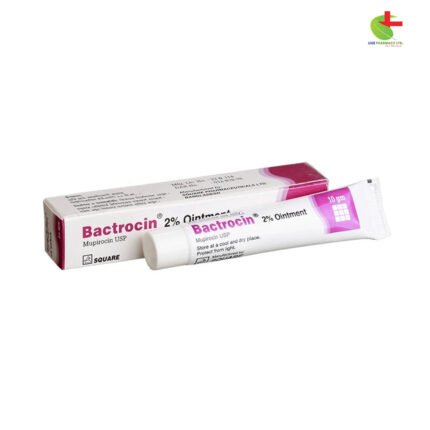Trupan 40
100.00৳ Strip
- Trupan is a powerful proton pump inhibitor, designed to alleviate gastrointestinal ailments.
- Its active component, Pantoprazole, targets the H+/K+ ATPase enzyme system, effectively reducing gastric acid production.
- Whether taken orally or via intravenous injection, Trupan provides enduring relief for conditions like peptic ulcers, GERD, and NSAID-induced ulcers.
- Well-tolerated and reliable, Trupan stands as a trusted solution for managing acid-related disorders.
 Brand
Brand
|
Square Pharmaceuticals PLC |
|---|---|
 Generics
Generics
|
Pantoprazole Sodium |
Indications
Trupan serves as an effective treatment where reducing acid secretion provides therapeutic benefits. These include:
- Peptic ulcer diseases
- Gastroesophageal reflux diseases
- Ulcers induced by non-steroidal anti-inflammatory drugs (NSAIDs)
- Eradication of Helicobacter pylori (when used in combination with antibiotics)
- Zollinger-Ellison Syndrome
Pharmacology
Pantoprazole, the active ingredient in Trupan, operates as a proton pump inhibitor. It achieves this by binding covalently to the H+/K+ ATPase enzyme system on the surface of gastric parietal cells. This action inhibits both basal and stimulated gastric acid secretion, persisting for over 24 hours regardless of the stimulus.
Dosage & Administration
For oral administration:
- Benign gastric ulcer: 40 mg once daily in the morning for 4 weeks, with a further 4-week continuation if full healing hasn’t occurred.
- Gastro-esophageal reflux disease: A dosage of 20-40 mg daily in the morning for 4 weeks, with a continuation of another 4 weeks if necessary. Maintenance dose is 20 mg daily, with a possibility of increasing to 40 mg daily.
- Duodenal ulcer: 40 mg daily in the morning for 2 weeks, extendable for another 2 weeks if needed.
- Duodenal ulcer associated with Helicobacter pylori: Recommended dose of 40 mg twice daily for one week alongside antimicrobial agents.
- Prophylaxis of NSAID-associated gastric or duodenal ulcer: 20 mg daily for those requiring long-term NSAID treatment.
- Zollinger-Ellison Syndrome: Initial dose of 80 mg once daily, adjusted based on response.
For IV injection:
- Dosages vary depending on the condition, ranging from 40 mg once daily for 7-10 days for duodenal and gastric ulcers to 80 mg for prevention of rebleeding in peptic ulcers.
Interaction
Clinical studies have shown no significant drug interactions with Trupan.
Contraindications
Trupan is contraindicated in patients with known hypersensitivity to any components of the formulation.
Side Effects
Trupan is generally well-tolerated. Common side effects include headache and diarrhea, while rare side effects may include abdominal pain, flatulence, rash, insomnia, and hyperglycemia.
Pregnancy & Lactation
Pantoprazole is categorized as Pregnancy Category B by the US FDA. However, there are limited studies in pregnant women, thus caution should be exercised.
Precautions & Warnings
Patients should be advised against splitting, chewing, or crushing Trupan tablets. Long-term therapy may lead to malabsorption of Vitamin B12 or increase the risk of osteoporosis-related disorders.
Overdose Effects
There are no known symptoms of overdosage in humans. Symptomatic and supportive management are recommended.
Therapeutic Class
Trupan belongs to the proton pump inhibitor class.
Reconstitution
For IV administration, Trupan should be given as a slow intravenous injection or infusion, with detailed instructions provided.
Storage Conditions
Store Trupan in a dry place, away from light and heat, and out of reach of children.
Chemical Structure
Molecular Formula: C16H15F2N3O4S. Chemical structure corresponds to Pantoprazole Sodium.
Common Questions about Trupan 40 mg Tablet
- What is Trupan 40 mg Tablet?
- How long does it take for Trupan 40 mg Tablet to work?
- At what frequency do I need to use Trupan 40 mg Tablet?
- Should I use Trupan 40 mg Tablet before or after food?
- What are the instructions for the storage and disposal of Trupan 40 mg Tablet?
- What are the effects of Trupan 40 mg Tablet in older adults?
- Is Trupan 40 mg Tablet safe?
- Does Trupan 40 mg Tablet cause weight gain?
- What are the side effects of Trupan 40 mg Tablet?
- Can I take Trupan 40 mg Tablet if I am pregnant or breastfeeding?
- What should I do if I miss a dose of Trupan 40 mg Tablet?













Reviews
There are no reviews yet.